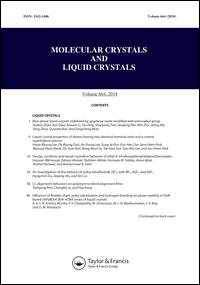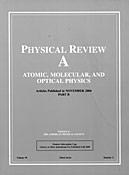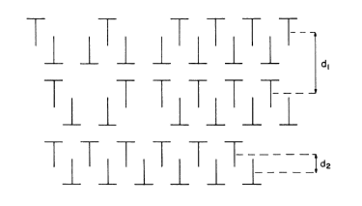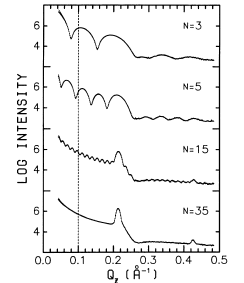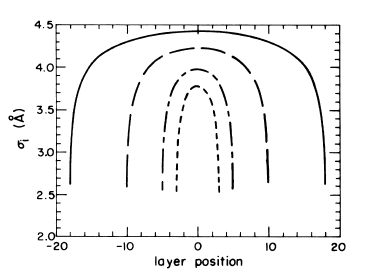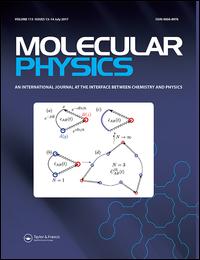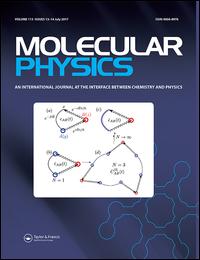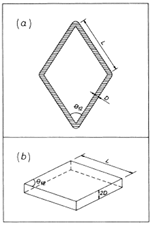
Landau-Peierls instability, x-ray-diffraction patterns, and surface freezing in thin smectic films
R. Hołyst
Phys. Rev. A 1991, 44, 3692
A model of x-ray diffraction for thin smectic-A liquid-crystal films is presented. The effect of the smectic-layer displacement fluctuations and correlations and the molecular form factor on the interlayer structure and the x-ray-diffraction pattern is discussed. In thin films the influence of the displacement-displacement correlation function on the x-ray-diffraction pattern is very small and can be neglected in the analysis of experimental data. On the other hand, both the displacement-fluctuation term (Debye-Waller factor) and molecular form factor produce strong measurable effects and so can be determined. We discuss the dependence of displacement fluctuations, calculated in the framework of the Landau–de Gennes model, on the smectic elastic constants and the smectic-vapor surface tension and show that these constants can be determined from the x-ray-diffraction pattern. The analysis of the hydrodynamic (collective) layer fluctuations and the individual molecular-motion fluctuations shows that the latter can be neglected in comparison to the former. The fluctuation amplitudes predicted by the model agree within 5% with the recent experimental measurements performed on smectic-I on –C films.
In thin smectic films the fluctuation amplitudes σ(r)=[〈u2(r)〉]1/2 are only ∼4 Å compared with ∼8 Å in a macroscopic sample. The fluctuations are suppressed at the two free surfaces by the large surface tension, grow away from each surface, and have a parabolic profile near the center of the film. We argue that one of the reasons for surface freeezing in smectic liquid crystals is the quench of the layer fluctuations by the large surface tension. However, we also show that in systems with small surface tension the fluctuations at the surface are in fact larger than the ones in the interior of the system. The growth of the diffuse scattering, due to the displacement-displacement correlations, with the thickness of the smectic film is discussed and shown to evolve towards the structure predicted for large samples by Gunther, Imry, and Lajzerowicz [Phys. Rev. A 20, 1733 (1980)]. The model for the displacement layer fluctuations including the director as an independent variable is presented. Furthermore, the coupling between the layer fluctuations and the nematic order parameter in smectic liquid crystals is qualitatively discussed. It is argued that the compressional modes induce the nematic order-parameter fluctuations and that a large fluctuation profile may induce the smectic-A–smectic-C phase transition in thin films. Eventually in tilted smectic liquid crystals the layer fluctuation profile may induce a tilt profile. Finally, it is shown that the presented model can be applied to smectic systems other than smectic-A; we give explicit formulas for the x-ray-scattering intensity from the smectic-Ad films and also calculate the fluctuations amplitudes for the stratified smectic-I on –C system.


